For a normal flowering period, plants need nitrogen. Therefore, gardeners use urea to feed cucumbers and other vegetable crops. Summer residents make a choice in favor of urea, because it is effective and affordable. But you need to use urea top dressing correctly, adhering to safety rules.
Content
What is urea
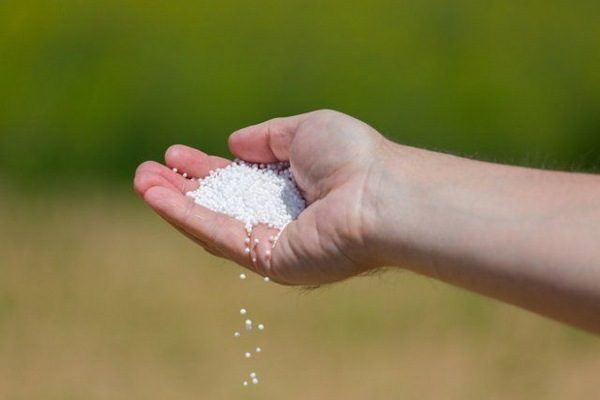
Carbamide is called nitrogen fertilizer, without which a normal vegetation period, plant growth and development is impossible. Therefore, it is especially necessary for soils with a low content of nutrients. Urea for cucumbers is used by gardeners both independently and together with other types of top dressing.
This fertilizer is a chemical product. It is obtained by synthesis at high temperature of ammonia and carbon dioxide. Urea has found application not only in agriculture (type “B”), but also in the food industry (type “A”).
Urea contains 46% nitrogen, which is available for plants. Without it, they cannot fully grow and develop.
Urea needs to be fed cucumbers for:
- accelerated growth of tops;
- replenishment of nitrogen content;
- increase plant immunity;
- providing protection against diseases and parasites - in this case, fertilizer is an excellent analogue of expensive insecticides. With it, you can destroy aphids, copper flakes, flower beetles, etc.
In addition, foliar feeding of cucumbers with urea does not burn the leaves of the culture.
Nitrogen deficiency and excess
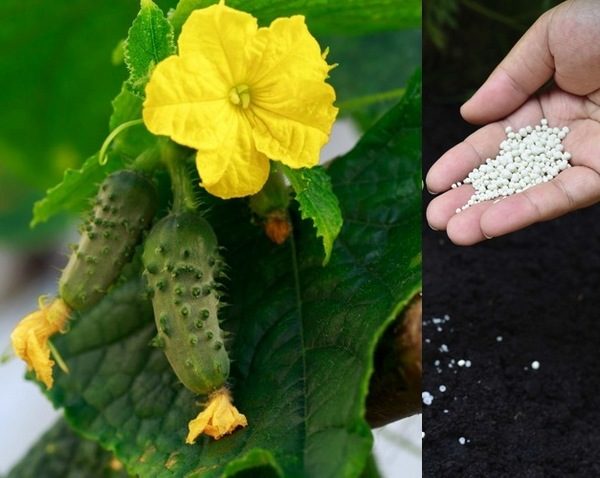
Cucumbers need proper and proper care, otherwise it is impossible to get a rich harvest. In case of nitrogen deficiency, you can notice:
- growth has slowed;
- leaves and stems turned yellow;
- during flowering, the leaves fall;
- ovaries are not formed;
- crop reduction;
- lateral shoot growth slowed down.
If these signs appear, then processing of cucumbers with urea is necessary.
An excess of nitrogen is also harmful to plants, as well as its lack. In this case, the green mass will grow too actively and become dark green. The fruits will be crooked or not appear at all.
How to breed fertilizer
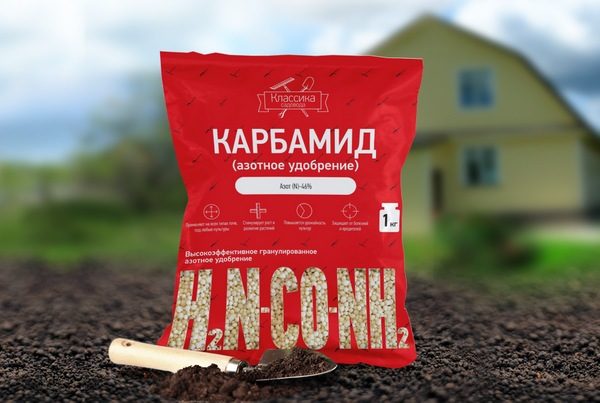
Urea can be fed cucumbers in diluted or dry form. It dissolves well in any liquid.
If a liquid solution is needed, then the product must be diluted with water. The ratio of liquid to drug depends on the chosen method of fertilizer application. At the same time, the instruction is important: if the dosage is indicated in grams, it is important to remember that 1 tablespoon contains 10 g of urea, and a regular glass - 130 g of the drug in granules.
If cucumbers grow in a greenhouse made of polycarbonate, then the recipe for cooking is as follows:
- water - 10 l;
- carbamide - 15 g;
- superphosphate - 20 g;
- potassium chloride - 15 g.
Fertilize cucumbers at the root in the open ground with a concentrated solution. To prepare liquid fertilizer that can be watered or sprinkled with vegetables, you will need:
- water is a bucket;
- urea - 15 g;
- superphosphate - 60 g.
To fertilize the culture with this mixture only after good watering and preferably on a cloudy day.
Application Dates
Cucumbers need nitrogen in the first half of the flowering period. Its duration continues from the moment of growing green mass and ends during the fruiting period. It is necessary to feed, guided by the sheet: as soon as the first appears, you can carry out the procedure.
After the beginning of the fruiting stage, the frequency of feeding should be reduced.
During the time that passes from growing cucumbers to obtain the desired result, fertilizer with urea should produce 5 times. But in order to get a good crop, it is important how many times urea has been used, and whether the procedure has been completed on time. The timing of the application of urea depends on the chosen method: root or extra root.
Fertilizing under the root system
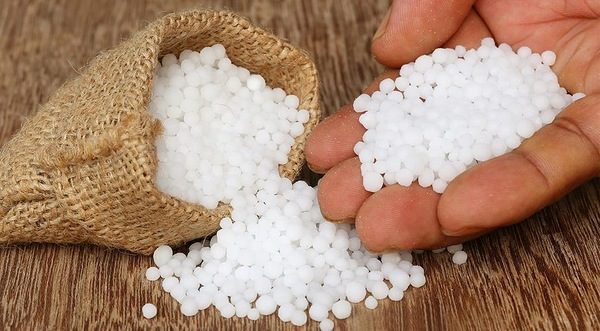
The use of urea has a beneficial effect on the development of culture, if you follow the rules. Its effectiveness will be higher if fertilizer is applied as deep as possible into the ground.
Stages of root dressing:
- The main tillage is to dig the soil in the fall or spring. In this period, you need to make urea. For every square meter of the site, 10 g of dry granules are required. They should be repaired so that they are at a depth of 8 cm. You can divide the fertilizer into 2 parts, one of which is introduced into the soil in the spring, and the second in the autumn.
- Sowing - the use of urea is permissible simultaneously with sowing seeds. The product must be decomposed into prepared wells, but at the same time avoid contact with the seed material. Add 4 g of urea to each well, then sprinkle with earth and sow seeds.
- The appearance of two true leaves - during this period, it is better to feed cucumbers with urea under the root. To prepare a solution of 30 substances, dissolve in a bucket of water and use for irrigation. If the culture is grown through seedlings, then water the cucumbers with urea in this case after 14 days - so much time is required for the plant to go through adaptation. To make it better rooted, 50 g of superphosphate can be added to the resulting solution.
- The beginning of fruiting - watering the seedlings with urea is necessary at the beginning of fruiting. This is an important aspect, since during this period the green mass consumes more nitrogen, potassium, phosphorus and other elements from the soil. Therefore, it is necessary to quickly replenish the content of these trace elements in the soil. Gardeners prepare liquid root fertilizers as follows: 30 g of urea, 20 g of potassium nitrate and 40 g of superphosphate are diluted in a bucket of liquid. Use a mixture for watering at the rate of 1 liter per 1 bush.
- Mass fruiting - at this time, the largest consumption of nutrients by the plant. Therefore, the deficiency of useful trace elements needs to be restored. Otherwise, a rich harvest will not work. To avoid such consequences, you need to mix 10 liters of water, 15 g of urea and 30 g of potassium nitrate. Use the resulting solution for watering cucumbers.
Regardless of the stage of feeding, it is better to carry out the procedure in the morning and evening hours. Then pour the soil with plenty of water.
Foliar top dressing
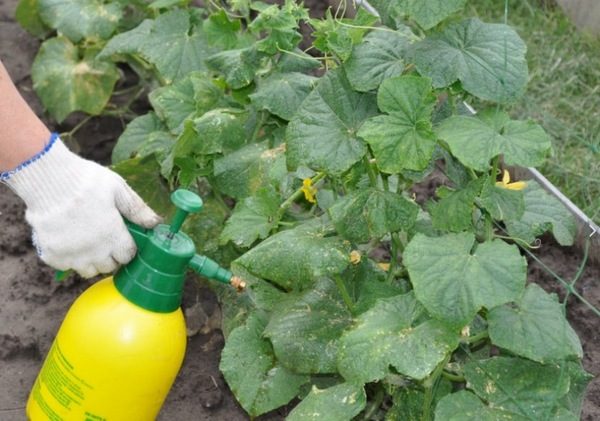
Vegetable growers resort to this method of urea application if the culture is painful or the ovaries and foliage have begun to fall. Foliar fertilizer has the most effect during drought or low temperatures, as it nourishes the plant.
The advantages of this method:
- the period of active fruiting increases;
- spraying cucumbers with urea helps beneficial substances get directly into the stems and leaves;
- profitability - urea will immediately fall on the crop that is being cultivated, and not on the ground, feeding not only the plant, but also weeds;
- immunity of a vegetable increases;
- can be used at any time, regardless of the stage of formation and development of the cucumber.
In order not to harm, you need to know how to fertilize, but also withstand the dosage:
- Pour the cucumbers with a solution prepared from 5 tbsp. Diluted in water. l urea. It is necessary to strictly adhere to the instructions, otherwise you can burn the leaves of the plant.
- Refuse watering during rainfall or at lunchtime. The best time for the procedure is morning or evening.
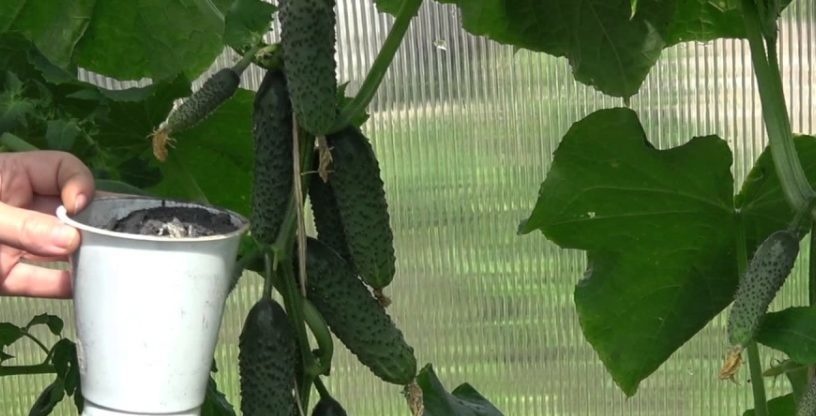 You may be interested in:
You may be interested in:For greater efficiency, you can make urea with manure or other types of fertilizers, trace elements.
Seedling treatment
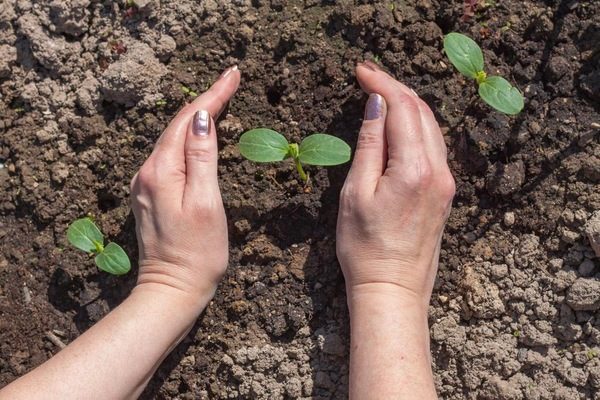
Urea can be sprayed with cucumbers during seed germination and in the transplant process. It is important to remember that an excess of nitrogen contributes to the growth of green mass and as a result, the tops and leaves will become large, and the fruits will be small.
Gardeners can make fertilizer in the garden when digging the land before planting seedlings or immediately before planting. In the first case, it is advisable to carry out the procedure twice a year: in autumn and spring. In this case, the product should penetrate deep into the earth by about 8-10 centimeters. Use no more than 10 g of urea.
In the second case, granules are poured directly into prepared wells. This must be done so as to avoid contact of the seeds with urea. If you neglect this rule, that the germination and development of culture will slow down. Therefore, initially the granules are placed in the soil, and then sprinkled with earth. Only then are the seeds added.
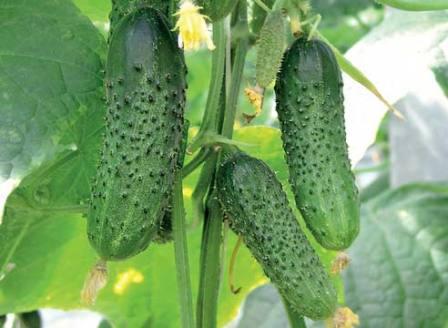 You may be interested in:
You may be interested in:Greenhouse Cucumber Processing
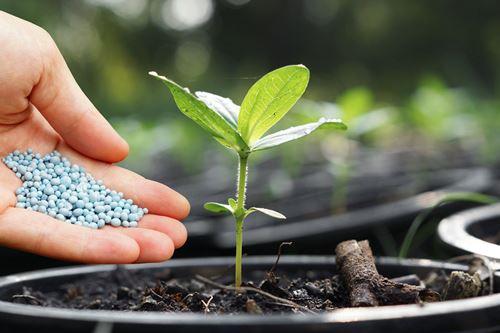
Feeding cucumbers in a greenhouse is best done in two stages, the first of which occurs before the onset of the growing season.
The second step is necessary if signs of a lack of nitrogen are noticeable. If the necessary temperature regime and regular watering are established in the greenhouse, then the leaves of the cucumbers should be green during the entire fruiting period, and not yellow and twisted. In the event that negative changes have occurred in the growth and development of greenhouse plants, it is necessary to cultivate the soil and leaves.
For the solution you need:
- dilute 50 g of urea in a bucket of water - root top dressing before vegetation;
- Dilute 15 g of urea in 10 l of liquid - for spraying the stems and leaves.
The best time for processing greenhouse cucumbers is evening, since plant burns can be avoided.
You can also feed cucumbers with dry granules. But their use should be careful, a few centimeters from the root. At the same time, no more than 7 g of urea should be attributed to 1 square meter of the plot. After completion, water. This method is quite risky, so before using it you need to think carefully about the possible consequences.
What you should pay attention to
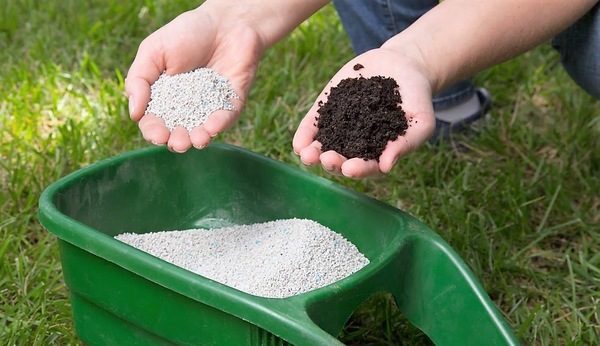
To get the desired result from feeding cucumbers with carbamide, you must:
- alternate root and foliar fertilizer application - two weeks should elapse between procedures;
- Do not exceed the dose recommended by the instructions. It is better to add more liquid to the solution than substances;
- to exclude the simultaneous use of urea and ash for fertilizing cucumbers. It is better to first spray the plants with a solution from the second agent, and after 14 days use urea;
- do not mix fertilizer with calcium nitrate;
- mix phosphates with urea immediately before use.
In addition, you need to consider the type of soil where cucumbers grow. For example, in sandy soil, nutrients are poorly preserved, so you need to feed the plants in small portions, but often. In the case of clay soil, the amount of fertilizer needs to be reduced, since clay holds useful components for a long time.
Precautionary measures
Urea is not dangerous for humans, but in some cases it can cause consequences such as allergies or intolerances. Therefore, feeding this substance is best done in personal protective equipment. You will need:
- gloves
- mask;
- respirator.
If the solution gets into your eyes, then they must be washed with plenty of water. Keep dry granules out of the reach of children and animals, away from food.
To obtain a rich and tasty crop of cucumbers, it is necessary not only to use various fertilizers, but also to strictly follow the instructions. Due to this, the plants will not be damaged.

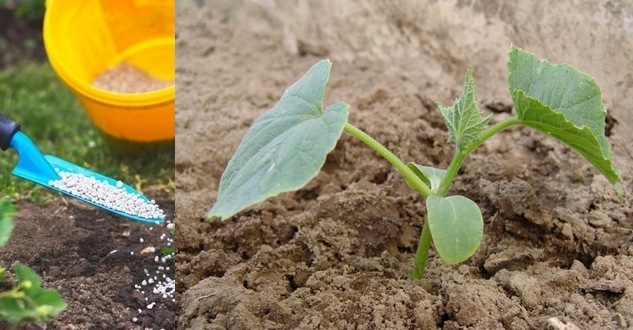
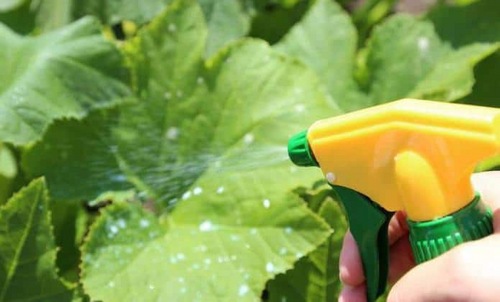
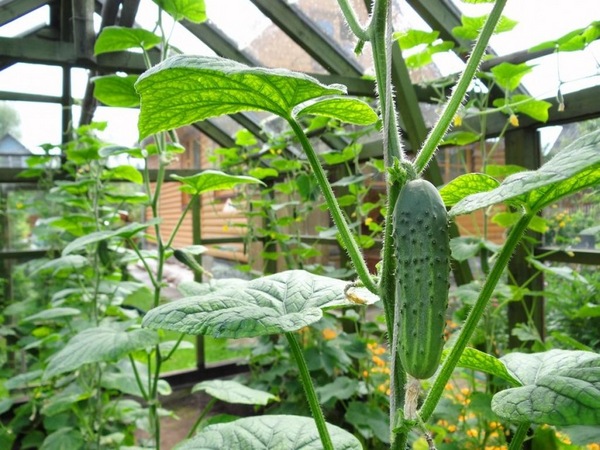
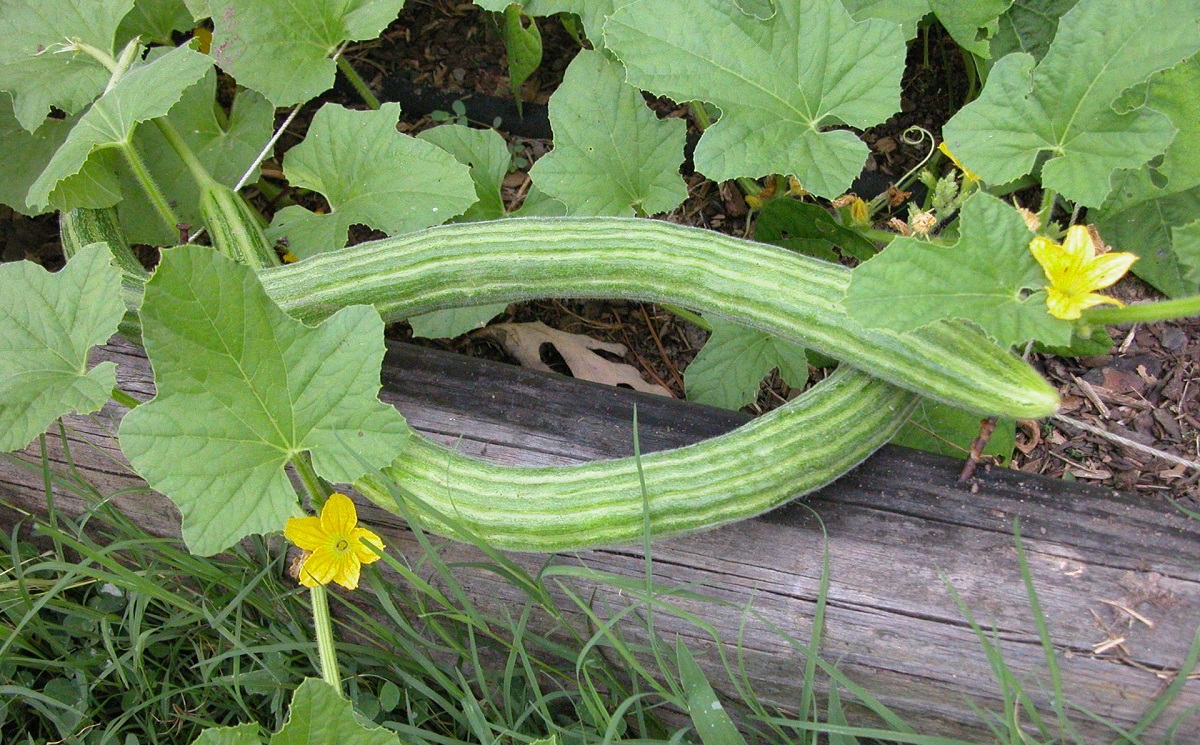 Armenian cucumber with melon flavor: description and characteristics, reviews
Armenian cucumber with melon flavor: description and characteristics, reviews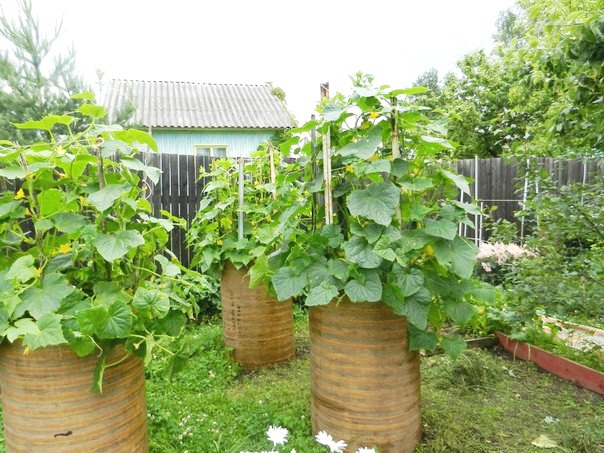 Do-it-yourself vertical beds for cucumbers: schemes, photos
Do-it-yourself vertical beds for cucumbers: schemes, photos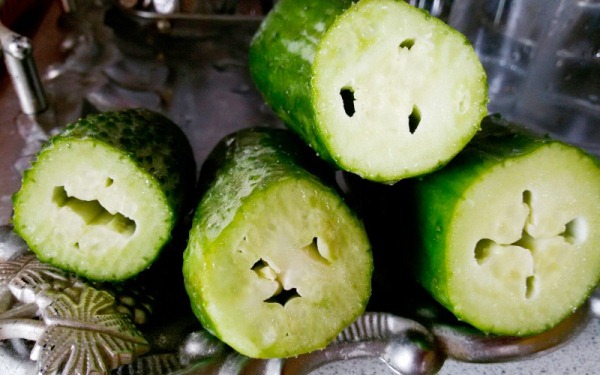 Hollow cucumbers: reasons for the appearance of hollow, what to do
Hollow cucumbers: reasons for the appearance of hollow, what to do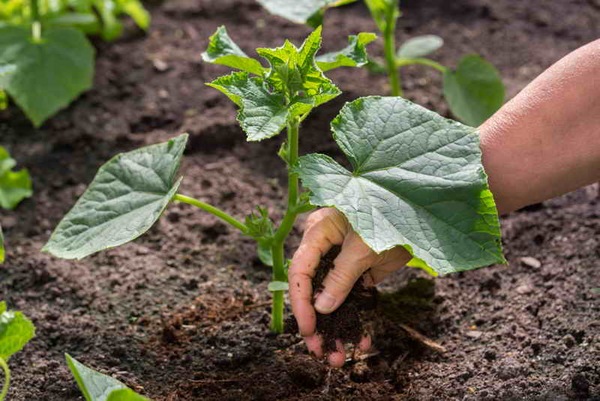 Which manure is best for cucumbers: application, how to breed
Which manure is best for cucumbers: application, how to breed